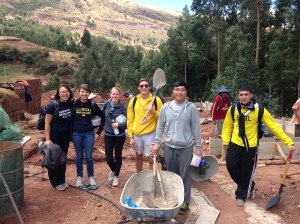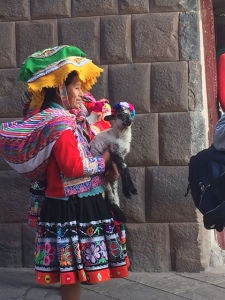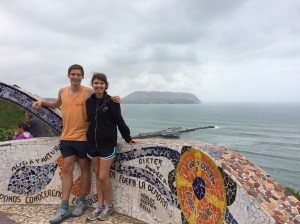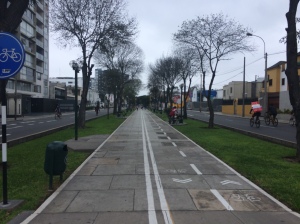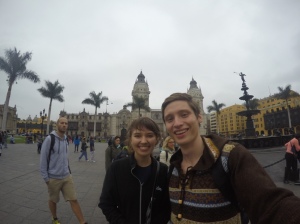Today it’s my (Lauren’s) turn to blog, and I couldn’t have had a more exciting day to write about. In my opinion, today represents the climax of our two week trip.
This morning we woke up late with the anticipation of arriving to work late for our last day. Yesterday, Nico had told us that we would be leaving at 10 AM, rather than 9 AM. Thus, we were surprised to see Memo arrive to pick us up at our normal time, 9 AM. Once we got everyone up and going, and gave Nico a hard time for the false information (Nico no es profesional), we set off to the worksite.
The last task to complete the greenhouse was to put on a yellow plastic tarp roof. To do this we spread out the tarp, hoisted it on top of the roof, and held the tarp taught while standing on plastic buckets. The tarp was then secured with wooden planks and nails by the village men working on the roof.
As we were cleaning up, Jane and Selve, the founders of Peru’s Challenge arrived, followed by a group of about 15-20 village women and children, come to celebrate the project’s completion. All of us together, volunteers, Peru’s Challenge representatives, and villagers gathered in a circle in front of the completed greenhouse. In the circle, Jane, Selve, the family, and the community leader took turns expressing their appreciation for the work that we (the volunteers), and the village helpers, had completed. We then took turns stepping forward to receive a certificate and t-shirt from Jane. Afterwards, the family walked up to each of us, thanking us, hugging us, and placing a large handful of confetti on our heads. They were followed by the rest of the villagers, each hugging us and wrapping a streamers around our necks.
The final step was to inaugurate the greenhouse, which involved breaking a decorated champagne bottle hanging above the doorway using a decorated hammer that hung next to the doorway. When Jane asked for one male and one female volunteer, Sam and I stepped forward as site leads. Together we took the hammer and broke the champagne bottle.
Finally it was time to celebrate by eating potatoes, cheese, and chile that the female villagers had prepared. As a special treat they also prepared cuy (guinea pig) for us to try. As a whole, the Michigan group seemed to enjoy the flavor of the delicacy.
After enjoying the food and chatting for a bit, we bid farewell to the villagers that we had worked with, as well as the rest of the community. We took off our work clothes for the last time, hopped in the van and headed back to the volunteer house.
After rounding out our lunch with the sandwiches Ramiro had prepared for us, we set off with Nico to climb the mountain directly behind the volunteer house. Nico had said that he had climbed the mountain before, several years ago with another group. As it turned out, even with this experience, the trail proved to be difficult to traverse, and even harder to find. Under Nico’s direction (Nico no es profesional), we often had to backtrack, or push through dense brush to rediscover a path.
This was definitely one of the most difficult hikes I’ve ever done. The path up the mountain was quite steep (we took the straight way up, passing orthogonally the winding, switchbacks over and over) and we took it at a very brisk pace. We encountered prickly bushes that poked through clothing, near-vertical cliffs, and ashen hillsides. Throughout the hike, we felt the effects of altitude, even after having been in Cusco for 2 weeks. Personally, I felt like my heart rate was about double what it would have been on a similar hike at a lower altitude, just trying to deliver enough oxygen to my legs.
As we approached the top, Martha and I began counting steps to push ourselves onward. First 40 steps, then 30 at a time before a break. Lack of oxygen, rather than lack of strength seemed to be the primary difficulty.
Finally we reached the top, where a cross had been placed. The top was quite cold and windy, but the view of the villages on the other side of the mountain, Cusco, and the mountains beyond Cusco was absolutely amazing. Nico estimated that we had reached an altitude of about 3900 – 4000 meters.
As the sun set and the twilight approached we descended down the mountain, again losing and rediscovering the path a few times. Back in Santa Maria Ramiro was waiting with a welcome dinner of soup, lasagna, vegetables and rice. After dinner we collapsed into a satisfied, exhausted sleep.
